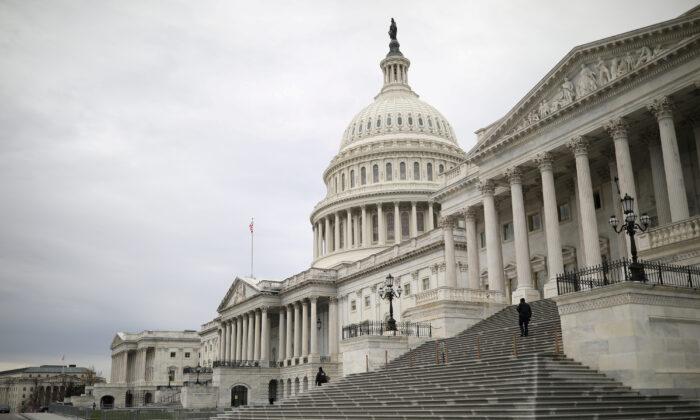One of the rarest moments in American governance is the Joint Session of Congress that convenes only every four years to receive and count the Electoral College votes in the previous November’s presidential election and to declare the official winner.
Article II, Section I of the U.S. Constitution, the 12th Amendment to the Constitution, and the Electoral Count Act of 1887 are the key laws governing the process members of the Senate and the House of Representatives must follow in Wednesday’s Joint Session.
The process is at once, both fairly straightforward, and pregnant with procedural questions that are subject to heated disagreement and which can have a decisive impact on the ultimate decision of the Joint Session regarding the winner of the presidential election.
Here, based on the Dec. 8, 2020, report of the Congressional Research Service (CRS), are summaries of the most important procedures and potential conflicts to watch for Wednesday:
- How the Electoral Votes are Counted: Vice-President Mike Pence, as the Senate’s presiding officer, also presides over the Joint Session and opens envelopes containing the electoral votes delivered to him and certified by each of the 50 states and the District of Columbia. The votes are opened in alphabetical order.
- Who Counts the Votes: Four “Tellers” are appointed, two from the Senate and two from the House. These are typically the chairmen and ranking minority members of the Senate Rules and Administration Committee and the House Committee on Administration.
- What Happens After the Votes are Counted? According to CRS, if there are no objections to any of the states’ electoral votes, then “after the votes of each state and the District of Columbia have been read, the tellers record and count them. When this process has been completed, the presiding officer announces whether any candidates have received the required majority votes for President and Vice President. If so, that ‘announcement shall be deemed a sufficient declaration of the persons, if any, elected President and Vice President of the United States’” (3 U.S.C. §15).
- But What if There Are Objections? This is where the Joint Session process gets complicated. When a state’s votes are announced, Pence will “call for objections, if any.” For an objection to be heard, it “must be presented in writing and must be signed by at least one Senator and one Representative. The objection ‘shall state clearly and concisely, and without argument, the ground thereof.’”
- The Joint Session is Suspended as the Senate and House then Meet Separately: “The joint session does not act on any objections that are made. Instead, the joint session is suspended, the Senate withdraws from the House chamber, and each house meets separately to debate the objection and vote whether, based on the objection, to count the vote or votes in question. Both houses must vote separately to agree to the objection by simple majority. Otherwise, the objection fails and the vote or votes are counted,” CRS explains.
- How Are the Objections Debated? No more than two hours of debate are permitted on a single objection and no senator or representative can speak more than once and then only for no more than five minutes.
- What are Grounds for Objections? The electoral votes from a state can only be challenged if they are claimed to be “not ‘regularly given’ by an elector and/or by an elector, who was not ‘lawfully certified,’” said CRS. It is likely the Republican senators and representatives who have said they will object to particular states’ electoral votes being counted will do so on the basis of claims they were not lawfully certified by state officials.
- What if Congress decides to punt on an objection involving claims of electors being not “lawfully certified?” As an example, the Constitution vests the authority to regulate elections exclusively in state legislatures, but executive branch officials in Georgia, Pennsylvania and other states changed the election laws for 2020 without legislative approval. The Senate and the House will have to decide if in doing so, those state executive branch officials violated the Constitution, or to accept their actions, which could lead to Supreme Court litigation, or to simply ignore the issue and vote to reject such objections.
This could take the form, for example, of forming a commission, as was done to resolve the 1876 presidential election impasse, or it could take the form suggested by Jenna Ellis, one of President Trump’s attorneys, who encouraged Pence to ask the legislatures of the six states that have two sets of electors to tell him which to accept.
- What if Senate and House Disagree on an Objection? This may be the most unclear area of the objections process. According to CRS, “When the two houses disagree, then the statute states that the votes of the electors whose appointment was certified by the governor of the state shall be counted.” But CRS conceded that “it is not precisely clear” exactly what situations this process would apply.
- Does the Presiding Officer of the Senate have Authority to Reject a State’s Electors? That issue is not clear, but the actions of then-Vice-President Al Gore in 2001 may suggest a liberal reading of the presiding officer’s authority.
Contact Mark Tapscott at [email protected]





